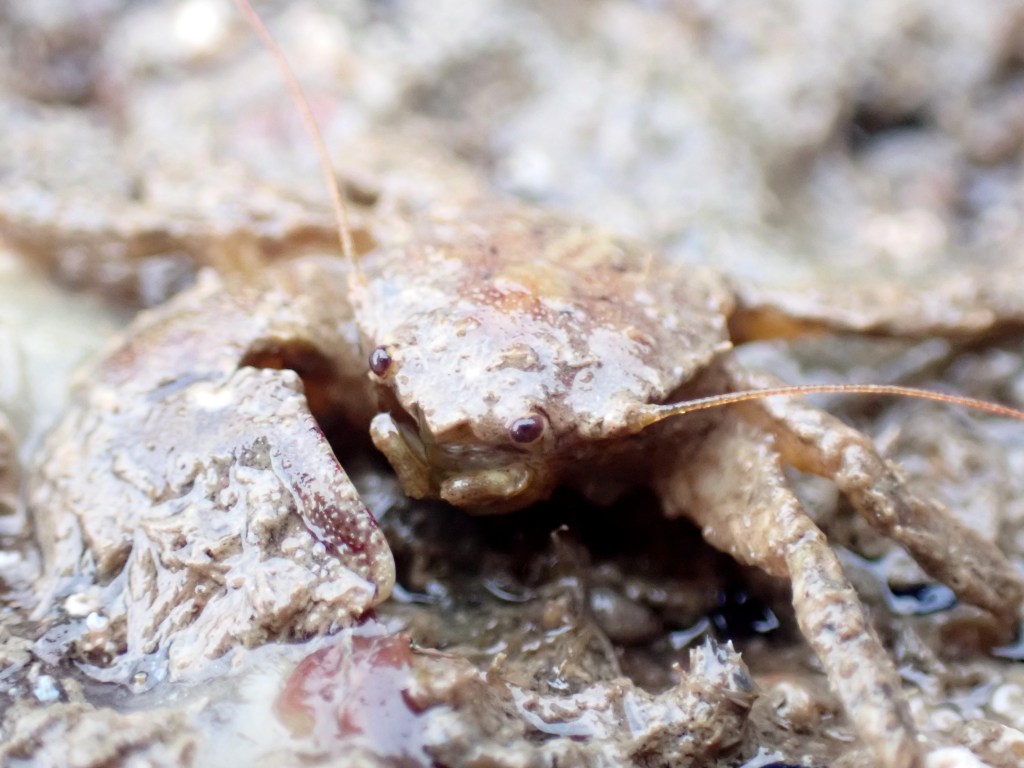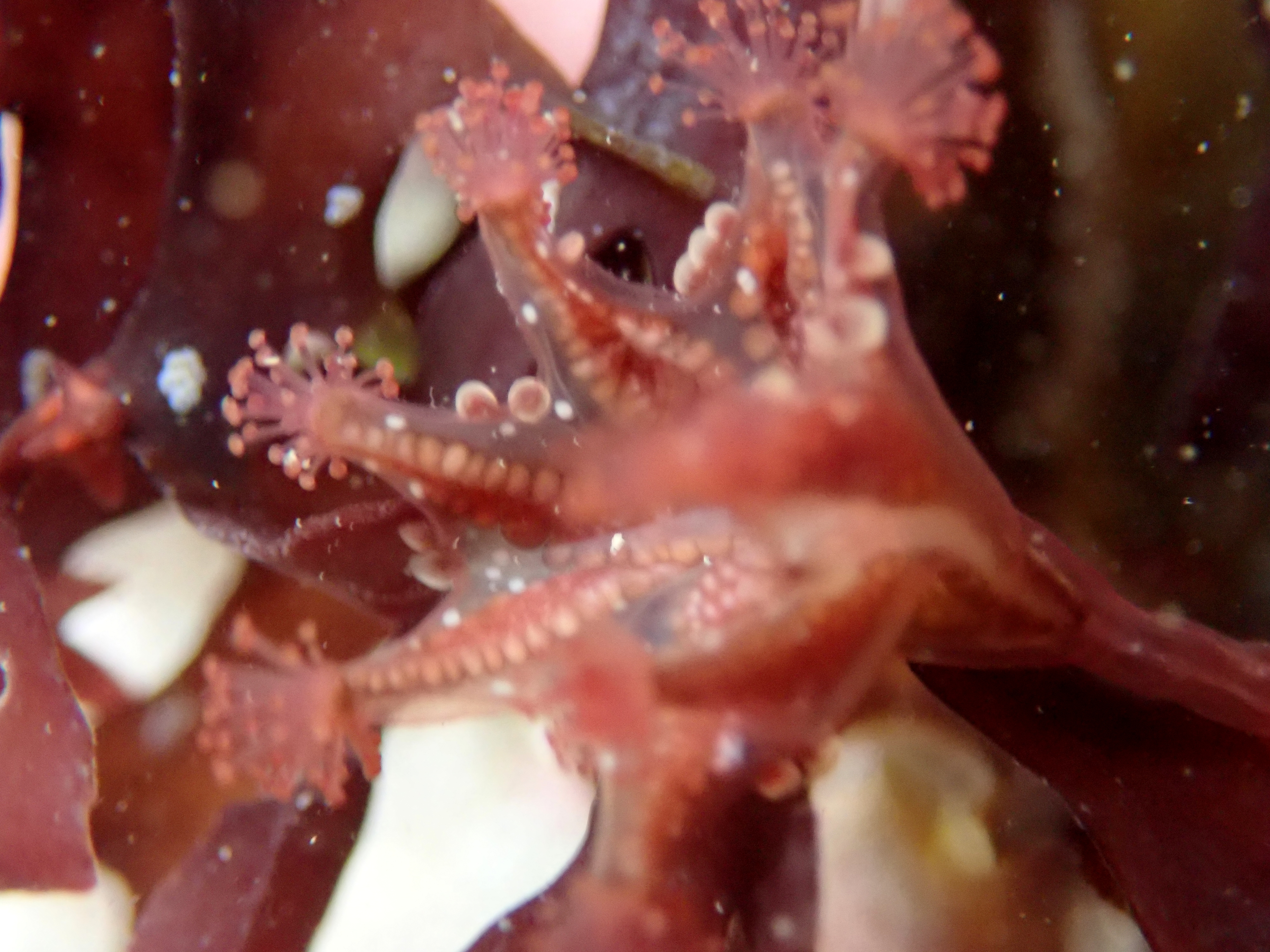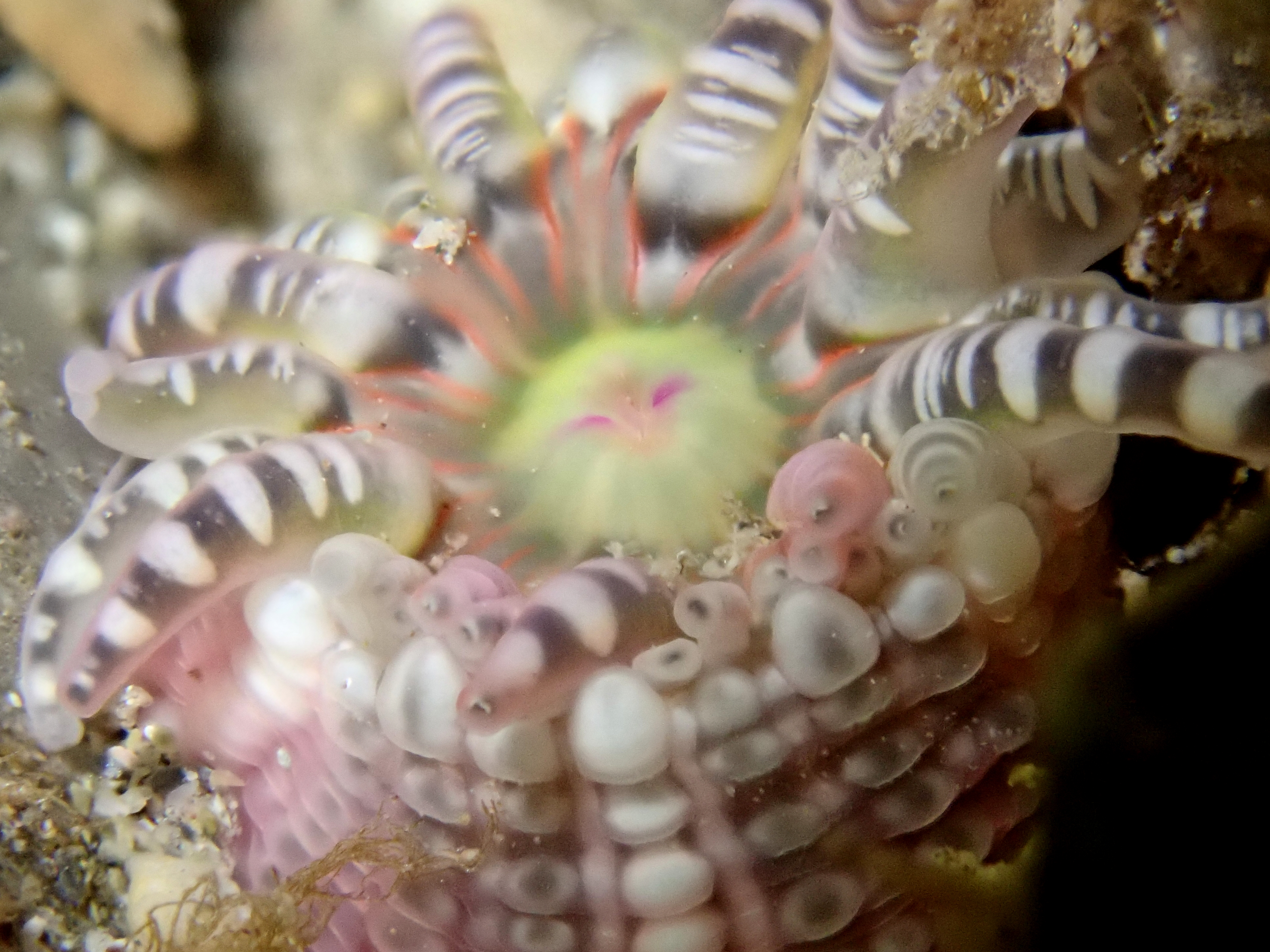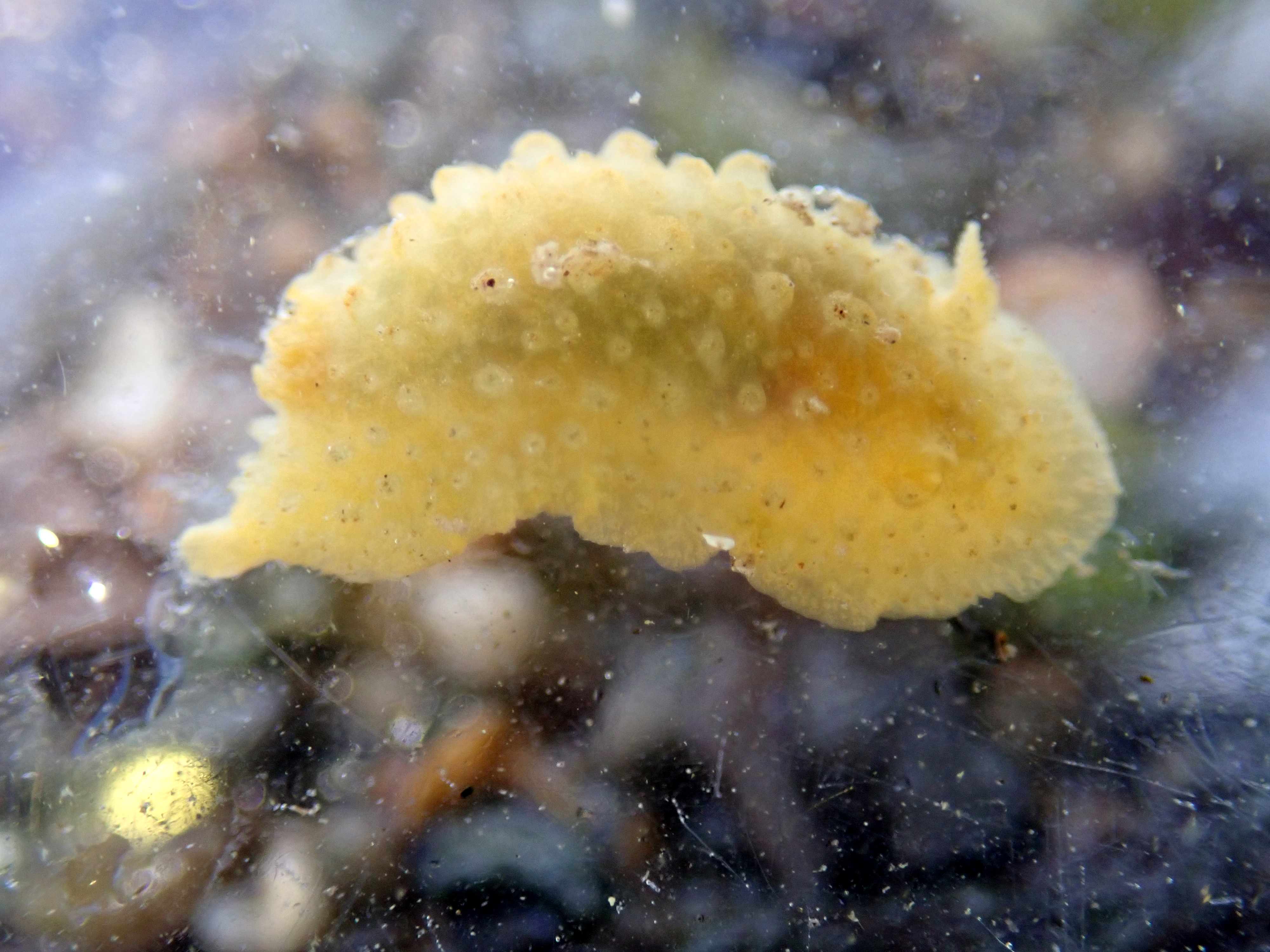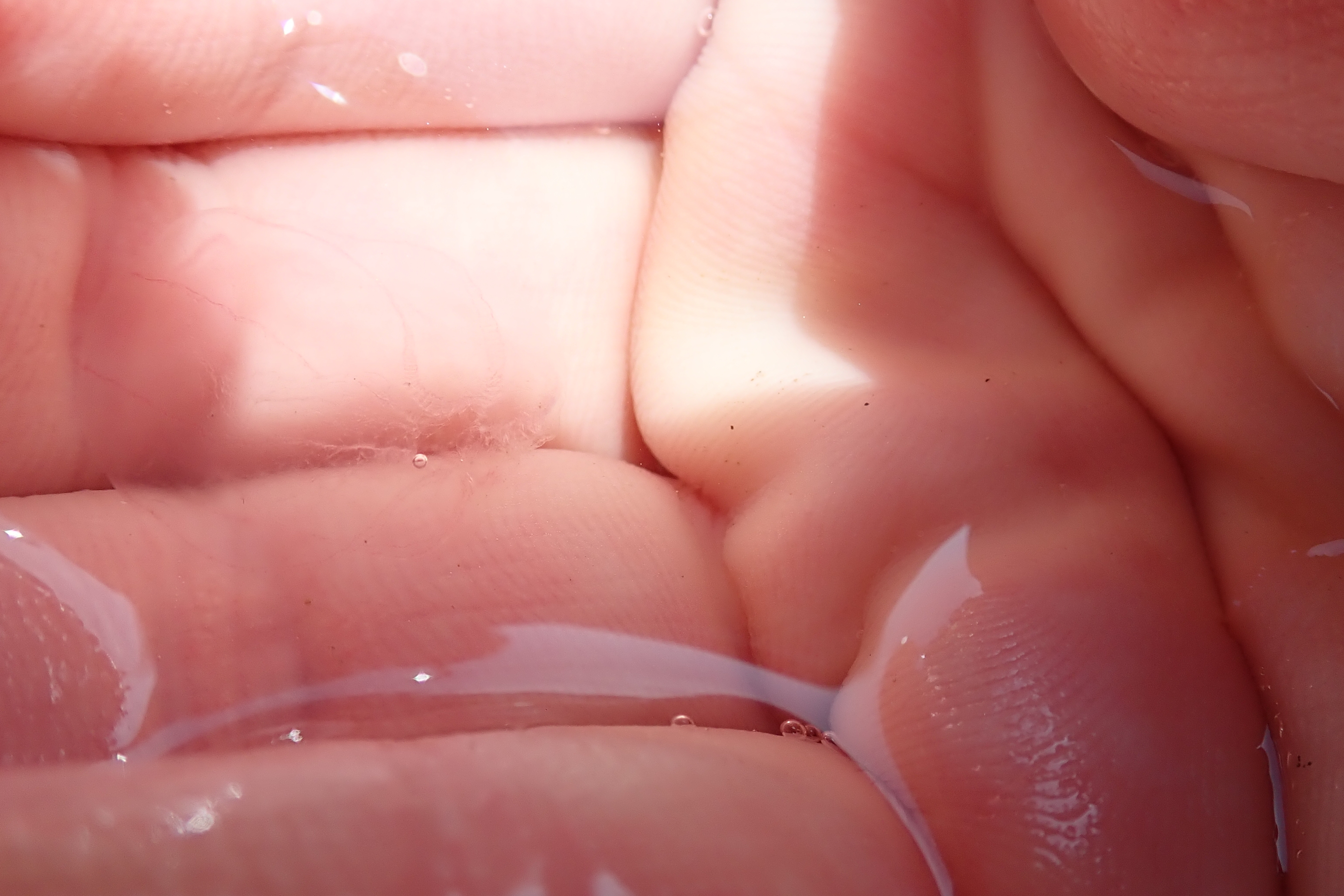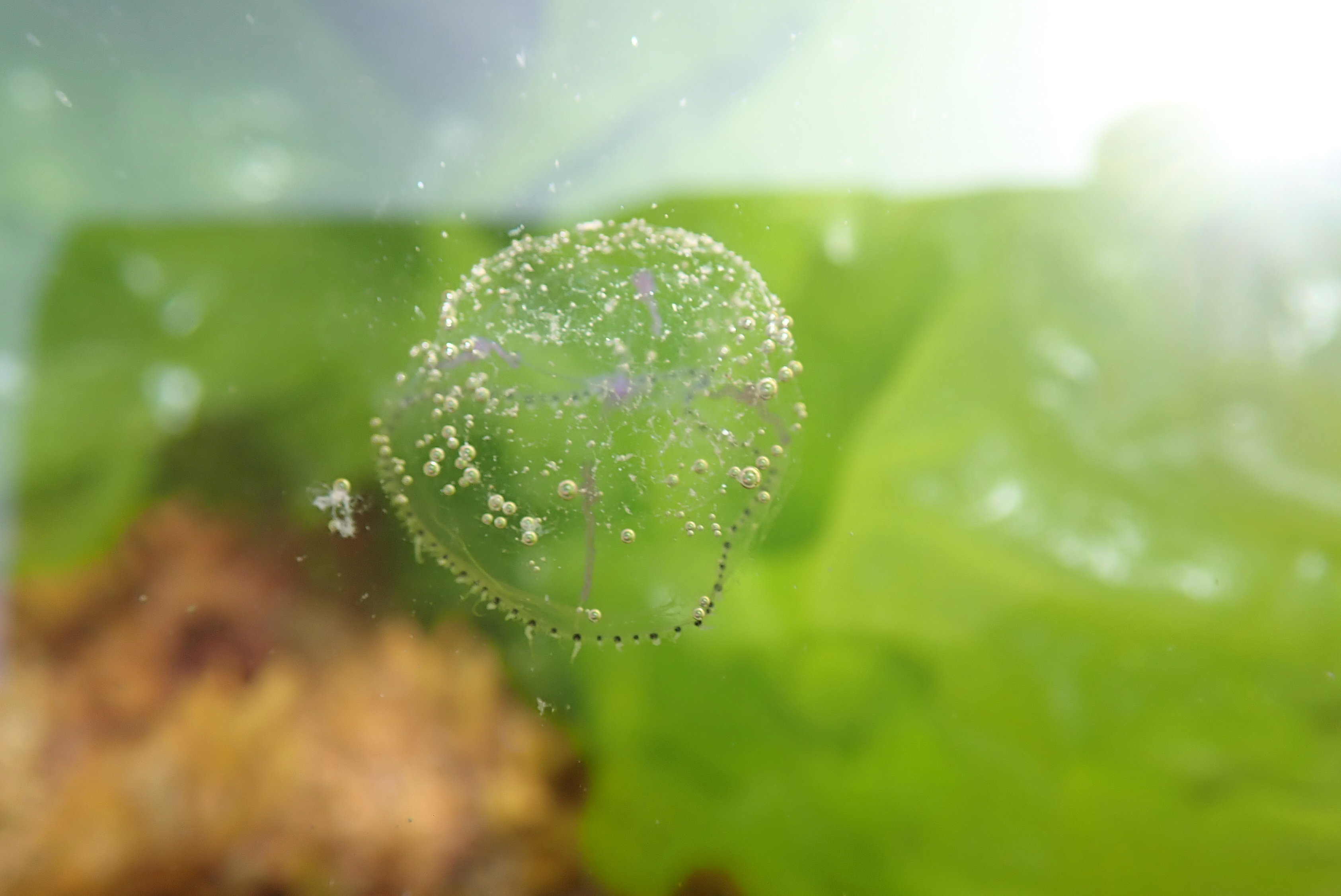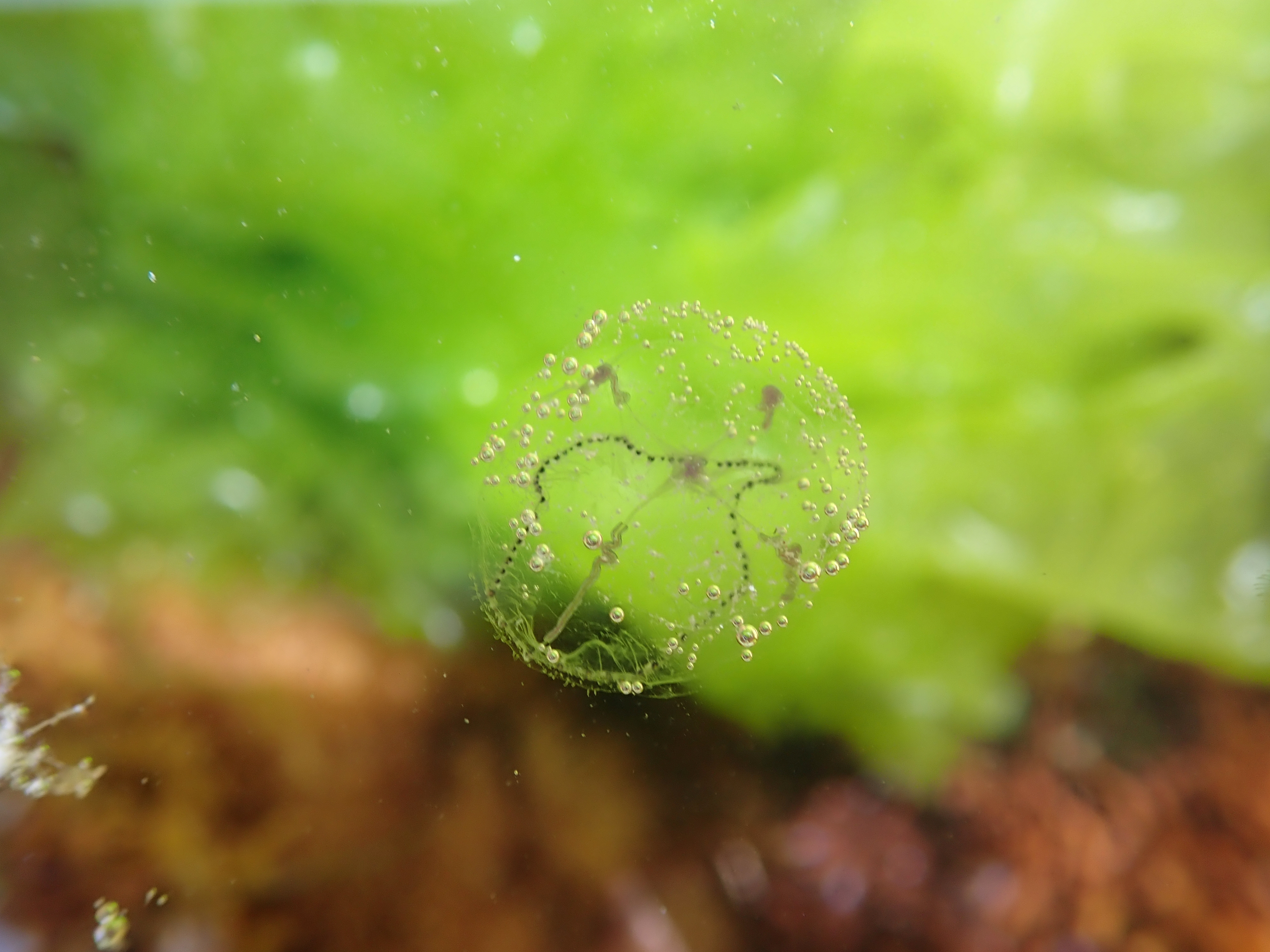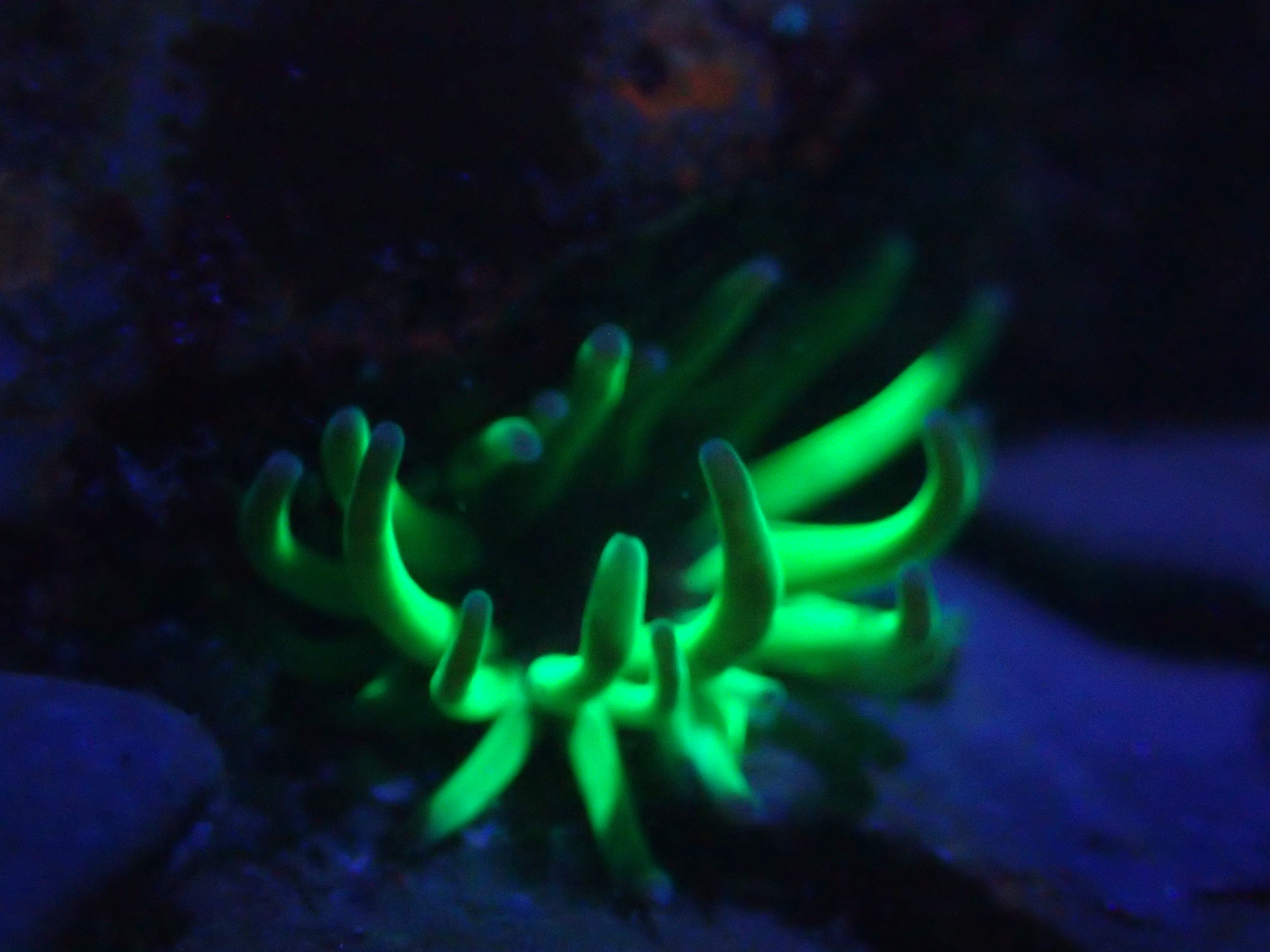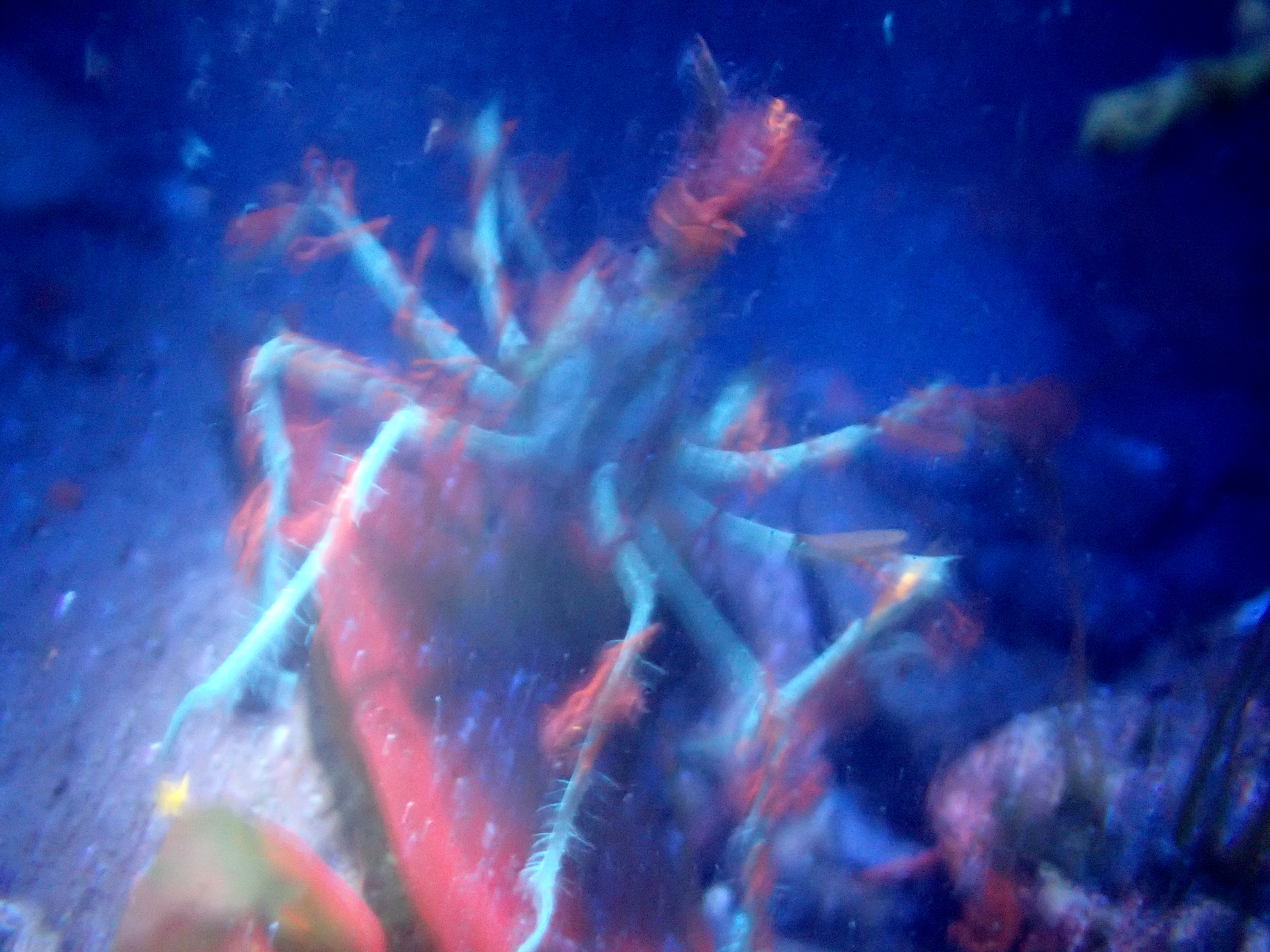If my blog posts have seemed a bit thin on the ground the last few months, it’s fair to put the blame on Atiyah, Brendan, Ciara and Dennis.
Even on the good days the lighting and conditions have been less than ideal so, to make the best of a mediocre tide, I enlisted the help of Other Half. Together, we could look under the sort of rock I usually see but leave alone, knowing it weighs far more than I do.
This short video shows you some of the animals living there…. read on to find out more.
Other Half was pleased with the strawberry anemones, which were enormously plump with all their tentacles retracted.

Under a carefully constructed shelter made of small stones and pieces of kelp we could also see the purple-tipped spines of a green shore urchin. Among its many disc-topped tube feet, a long polychaete worm was exploring.

What drew my eye most, though, were the holes in the rock. These were scattered across the surface of the rock and about the circumference of a pencil. I caught the tiniest glimpse of movement as I looked into one of them.
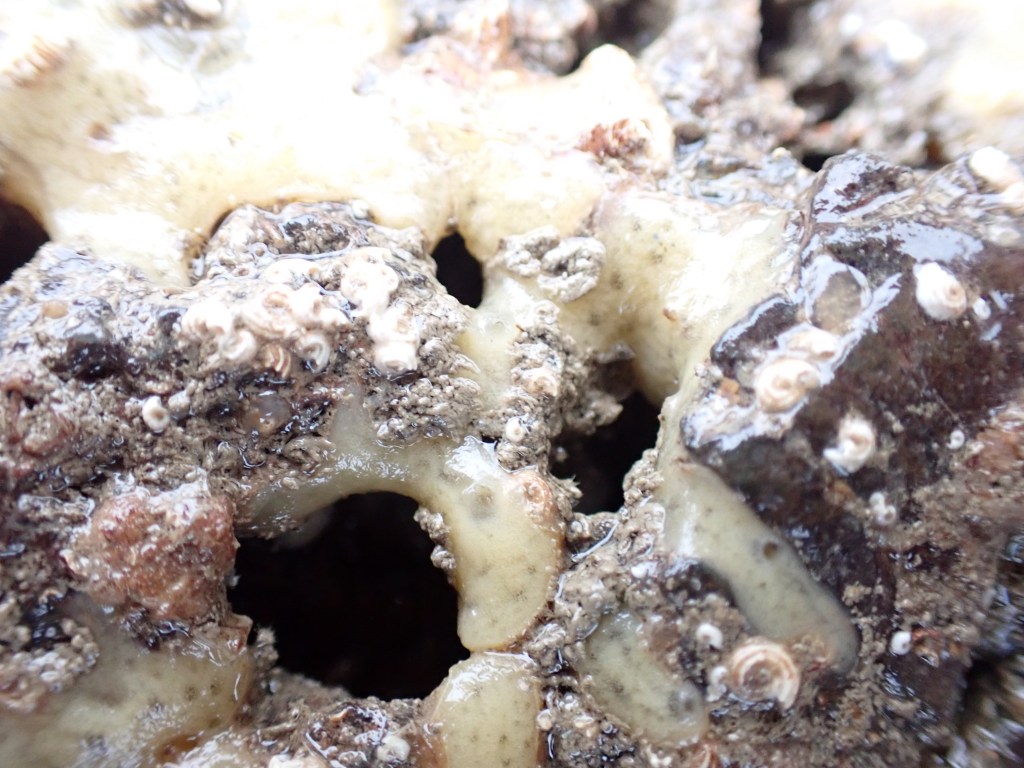
If I were the BBC Natural History Unit, I’d have filmed inside with an endoscope or transported the rock to deeper water so I could photograph the gaping shells emerging to feed. Instead, you will have to take my word for it that there were piddocks in those holes!
Piddocks are bivalve molluscs (clam shells), which burrow into the rock and spend their entire lives in their holes.
A rock with this many cracks and holes in it is bound to contain some good hiding places for other animals and also some air pockets, which enable some of our most unlikely rock pool wildlife to survive being submerged twice a day. Some insects and other arthropods that breathe air live here, but you have to be patient to see them.
I settled down with my camera and before long, the first waggling antennae of a springtail poked over the rim.

I often see rafts of blue-grey Anurida maritima springtails floating on the surface tension of pools in the summer, but these were smaller still and so pale they looked almost transparent. They are clearly visible in the video but I could only take very blurred still photos.
The fabulous Essential Guide to Rock Pooling by Steve Trewhella and Julie Hatcher was my first port of call in trying to identify them. The book has great photos and plenty of clear information on what to look for. Steve kindly identified these springtails as Axelsonia littorlis – a new species to me. It’s amazing what you find when you stop to look.
The best shots I could get were of a larger bug called Aepophilus bonnairei, a beetle-like creature with red eyes and a spiky coat of hairs around its back and legs. These hairs trap air bubbles, which help the insect to breathe when it is submerged.


Time was short as the tide was already turning and the waves were pounding in. I tried to photograph as many species as I could so that I could put records together afterwards. Some, like the painted top shells and the various crabs, are easy to identify.

One of the most striking sponges I see on the shore is the vivid blue Terpios gelatinosus. Many other sponges are harder to identify confidently.

It seemed that no part of this valuable habitat was left unoccupied. To avoid any of these creatures coming to harm, we gently manoeuvred the rock back in place well before the surging waves reached us.

As always, I was left in utter awe of the fragile little creatures we saw.
It is remarkable that these animals will cling onto life here no matter how much the wind howls and the sea roars around them, while we head home to bring the plant pots in out of the wind, check the fences and put the kettle on.
